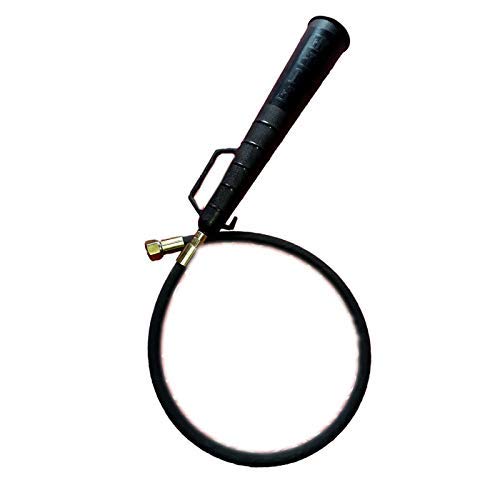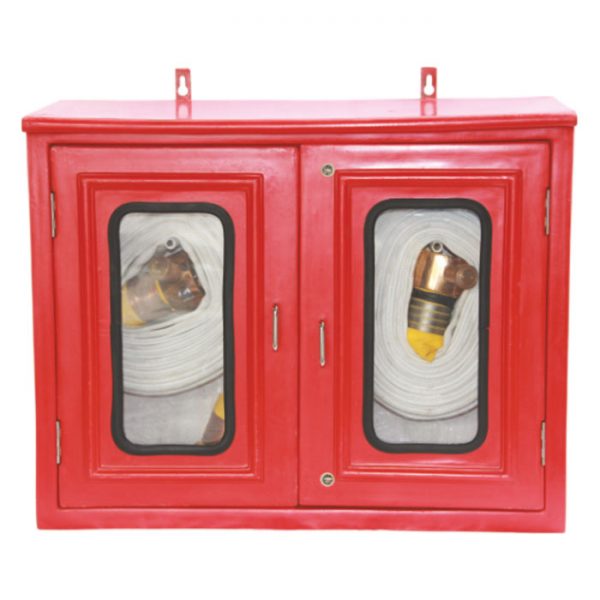FIRE ACCESSORIES
BUCKET AND STAND


A fire bucket and stand are essential safety equipment used to contain and extinguish small fires. Here’s a description of each component:
Fire Bucket:
– A fire bucket is a sturdy, cylindrical container made of metal or durable plastic.
– It is typically painted bright red or another highly visible color for easy identification in emergency situations.
– Fire buckets may have a capacity ranging from a few liters to several gallons, depending on the intended use and environment.
– They often feature a sturdy handle for easy carrying and pouring of water or fire-suppressing substances.
– Some fire buckets come with a lid to prevent the contents from spilling or to keep them protected when not in use.
Stand:
– The stand for a fire bucket is a stable and easily accessible platform designed to hold the bucket in a readily accessible location.
– It can be made of metal, wood, or another fire-resistant material to ensure durability and safety.
– The stand is typically designed to securely hold the bucket in an upright position, preventing it from tipping over or being knocked down during an emergency.
– It may be equipped with brackets or hooks to keep the bucket firmly in place.
– The stand is often placed in strategic locations throughout a building or outdoor area, such as near fire exits, kitchens, or areas prone to fire hazards.
Common Uses:
– Fire buckets and stands are commonly found in workplaces, public buildings, and industrial facilities as part of fire safety protocols.
– They provide a quick and accessible means of extinguishing small fires before they escalate.
– Fire buckets may be filled with water, sand, or a fire-retardant substance, depending on the type of fire and available resources.
– Fire drills and safety training often include instructions on the proper use of fire buckets and stands in emergency situations.
Overall, fire buckets and stands are critical components of fire safety infrastructure, providing a simple yet effective means of containing and extinguishing small fires before they can spread and cause significant damage or harm.
HOSE & HORN

A fire hose and horn assembly is a fundamental firefighting tool designed to deliver water or other extinguishing agents to the fire site with precision and control. Here’s a detailed description of each component:
Fire Hose:
– The fire hose is a flexible tube constructed from durable materials such as synthetic fibers, rubber, or a combination of both.
– It is engineered to withstand high pressure and abrasion, ensuring reliability during firefighting operations.
– Fire hoses come in various diameters and lengths, tailored to specific firefighting needs and environments.
– Typically, fire hoses are color-coded for easy identification, with standard colors including red for attack lines and white for supply lines.
– The hose is equipped with couplings or connectors at each end, allowing for easy attachment to water sources, fire hydrants, or firefighting equipment.
– Depending on the application, fire hoses may feature additional layers for reinforcement, such as textile braids or synthetic yarns, to enhance strength and durability.
Horn (Nozzle):
– The horn, also known as a nozzle or spray nozzle, is the component attached to the end of the fire hose that controls the direction, pattern, and velocity of the firefighting stream.
– It is typically constructed from robust materials like brass, aluminum, or composite plastics to withstand harsh firefighting conditions.
– Fire hose nozzles come in various designs, including adjustable fog nozzles, smooth bore nozzles, and combination nozzles, each optimized for specific firefighting tasks.
– Adjustable fog nozzles allow firefighters to change the spray pattern from a solid stream to a wide fog, providing versatility in firefighting tactics.
– Smooth bore nozzles produce a powerful, concentrated stream suitable for penetrating deep-seated fires or reaching distant targets.
– Combination nozzles offer a balance between stream reach and fog pattern, making them suitable for a wide range of firefighting scenarios.
Common Uses:
– Fire hose and horn assemblies are essential tools in both municipal and industrial firefighting operations, deployed in structures, vehicles, outdoor environments, and hazardous industrial sites.
– Firefighters use them to deliver water, foam, or other extinguishing agents directly to the fire, effectively suppressing flames and preventing fire spread.
– Proper training in hose handling, nozzle operation, and firefighting techniques is essential for firefighters to maximize the effectiveness of fire hose and horn assemblies during emergency response.
– Regular maintenance, inspection, and testing of fire hoses and nozzles are critical to ensure their operational readiness and reliability during firefighting operations.
In summary, fire hose and horn assemblies are indispensable components of firefighting equipment, providing firefighters with the means to deliver targeted and controlled streams of water or other extinguishing agents to extinguish fires and protect lives and property.
HOSE BOX


A fire hose box is an essential piece of equipment used to store and protect fire hoses and related firefighting tools in a readily accessible location. Here’s a detailed description of its components and functionality:
Box Construction:
– Fire hose boxes are typically constructed from durable materials such as metal, fiberglass, or high-density plastic.
– They are designed to withstand harsh environmental conditions, including exposure to moisture, UV radiation, and temperature fluctuations.
– The box is usually equipped with a hinged door or lid for easy access to the contents and secure closure to prevent unauthorized access or tampering.
– Some fire hose boxes may feature transparent or translucent panels to allow visual inspection of the contents without opening the box.
Interior Configuration:
– Inside the fire hose box, there are compartments or mounting brackets to securely store fire hoses, nozzles, adapters, and other firefighting equipment.
– The interior layout is designed to optimize space utilization and organization, ensuring that items are easily accessible when needed.
– Mounting brackets or straps are used to secure the fire hose in place, preventing it from shifting or becoming tangled during storage.
Accessibility and Visibility:
– Fire hose boxes are strategically located throughout buildings, industrial facilities, vehicles, and outdoor environments to provide easy access to firefighting equipment in case of emergencies.
– They are typically installed near fire exits, stairwells, fire hydrants, or other areas designated as fire assembly points.
– Fire hose boxes are prominently marked with standardized symbols or signage, indicating their purpose and the location of firefighting equipment.
Protection and Maintenance:
– The primary function of a fire hose box is to protect firefighting equipment from damage, contamination, and exposure to environmental elements.
– The box helps extend the service life of fire hoses and related tools by shielding them from UV radiation, moisture, dust, and debris.
– Regular inspection, maintenance, and testing of fire hose boxes are essential to ensure that they remain in good working condition and that the contents are ready for immediate use during emergencies.
Regulatory Compliance:
– Fire hose boxes must comply with relevant fire safety standards and regulations set forth by national or local authorities.
– These standards may specify requirements for box construction, dimensions, labeling, and placement to ensure consistency and effectiveness in emergency response procedures.
In summary, a fire hose box serves as a critical component of fire safety infrastructure, providing secure storage and protection for fire hoses and firefighting tools while ensuring their accessibility and readiness for use in firefighting operations.
